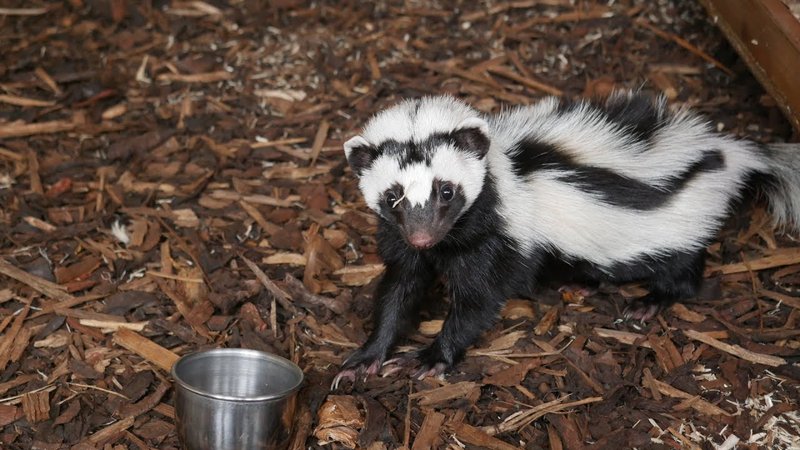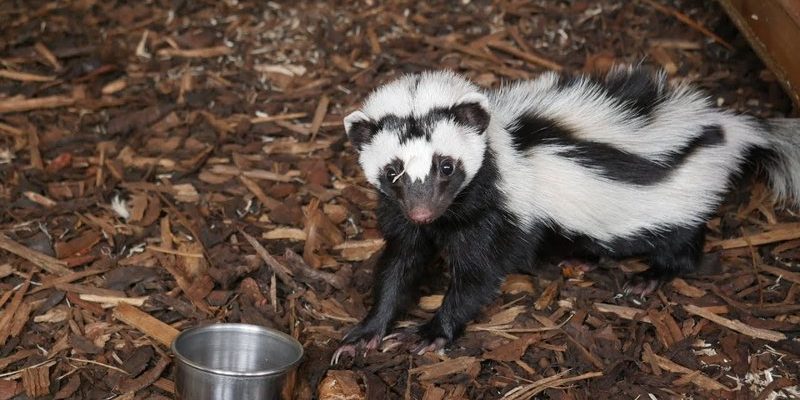
Imagine trying to navigate a world where food is scarce, temperatures fluctuate wildly, or predators lurk around every corner. Zorillas do just that, making homes in habitats across Africa, from savannas to forests. So, how do they manage? Let’s dig into some of the key adaptations that help zorillas not just survive, but actually thrive in these environments.
Understanding the Zorilla’s Habitat
Zorillas inhabit a variety of environments, including grasslands, scrub forests, and savannas. These areas can often face extreme conditions, whether it’s scorching heat during the day or chilly nights. The **adaptability** of zorillas shines through here. For example, they can make homes in burrows or dens left by other animals, providing shelter from the elements and a safe place to raise their young.
Interestingly, zorillas are quite territorial. They mark their territory with scent marking, which helps them communicate with other zorillas. This is especially important when the resources are limited. By keeping others at bay, they reduce competition for food and mates, ensuring their survival in an unpredictable landscape.
Adapting to Food Scarcity
One of the most remarkable aspects of zorillas is their **dietary versatility**. While they primarily feed on insects, they aren’t picky eaters. Zorillas will munch on fruits, small mammals, and even the occasional bird. This flexibility in food sources means they can adapt to whatever is available around them.
During dry seasons, when insects become scarce, zorillas might shift their diet more toward plants. They can forage for roots or tubers, making use of their keen sense of smell to find food underground. This ability to change their diet helps them navigate periods of food scarcity.
Fierce Defenders: The Zorilla’s Defense Mechanisms
What happens when a zorilla encounters a predator? Here’s the thing: they don’t just run away. Zorillas have a **unique defense mechanism** that most animals would envy. They can secrete a foul-smelling liquid from glands located near their tails. This stinky spray isn’t just unpleasant; it’s a powerful deterrent against potential threats. Predators quickly learn that getting too close to a zorilla is a bad idea.
Let me explain how this works. When a zorilla feels threatened, it will arch its back, puff up its fur, and face its attacker. If that doesn’t scare them off, it’ll release the stinky spray. Many animals, from lions to birds of prey, find the smell so offensive that they’ll turn tail and run. It’s a clever tactic that flips the script on the predator-prey dynamic.
Social Behavior and Communication
Zorillas are generally solitary creatures, but they do have interesting social interactions. They communicate through a series of vocalizations and body language, conveying everything from warnings to mating calls. **Understanding these signals** is crucial for both survival and reproduction. For instance, when a zorilla encounters another of its kind, it might engage in a series of hisses or growls to establish dominance or deter challenges.
During the breeding season, however, zorillas become more social and display elaborate courtship behaviors. These interactions help maintain genetic diversity within the population, crucial for the species’ long-term survival.
Thermoregulation: Staying Cool in the Heat
Living in places with extreme temperatures means **thermoregulation** is a big deal for zorillas. During the day, they’re often active early in the morning or late in the afternoon, avoiding the harsh midday sun. At night, they come alive again, hunting for food when it’s cooler and safer from predators.
Their fur also plays a role. The black-and-white coloration not only functions as camouflage but can help with temperature regulation. The dark fur absorbs heat when it’s cooler, while the lighter areas reflect sunlight during warmer periods. This smart design helps them manage temperature fluctuations efficiently.
Conservation Challenges and Successes
Despite their resilience, zorillas are facing challenges due to habitat loss and hunting. As human populations expand, the spaces where zorillas can thrive shrink. Conservation efforts are crucial to ensure that these little fighters have a future.
Organizations are working to protect their habitats and raise awareness about their role in the ecosystem. Without adequate protection of their habitats, we risk losing not only zorillas but also the delicate balance of their ecosystems.
Zorillas might be small and often overlooked, but their survival skills in harsh environments are nothing short of impressive. From their versatile diet to their unique defense mechanisms, these furry little creatures have adapted remarkably well to their surroundings.
By understanding how zorillas thrive, we can appreciate the beauty of nature’s resilience and the importance of conservation efforts. Each time we take a moment to learn about creatures like zorillas, we’re reminded of the incredible diversity of life on our planet and our responsibility to protect it. So next time you think about survival in tough conditions, remember: the zorilla is a perfect example of how nature finds a way.

